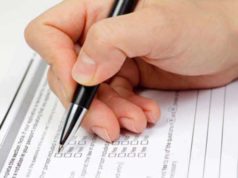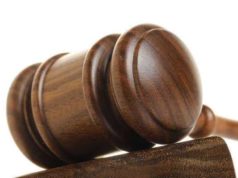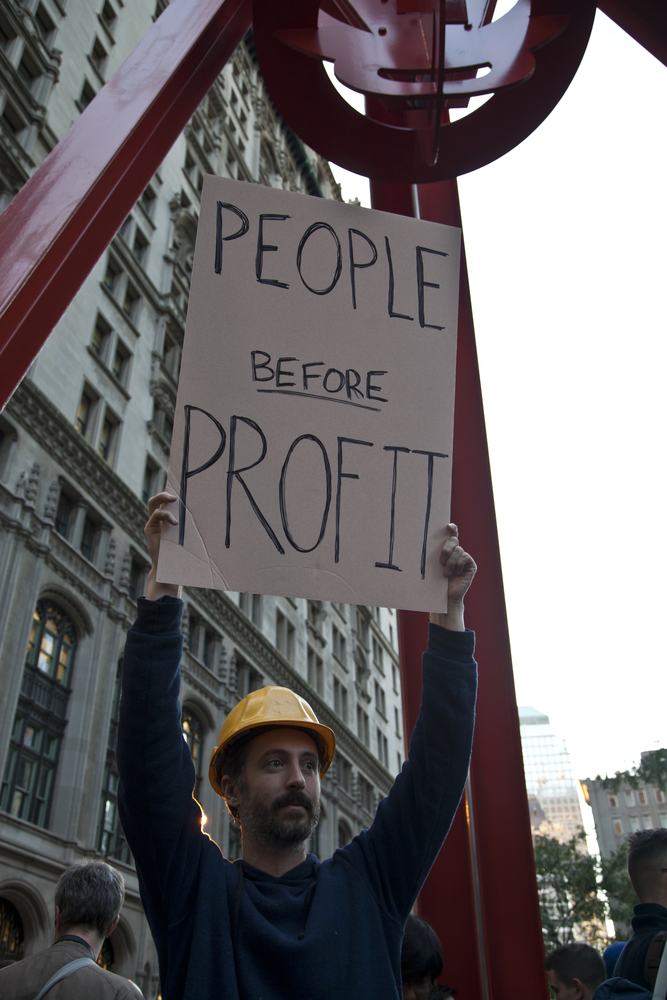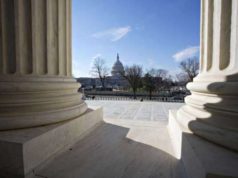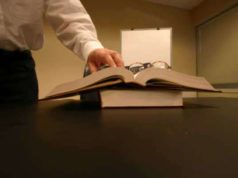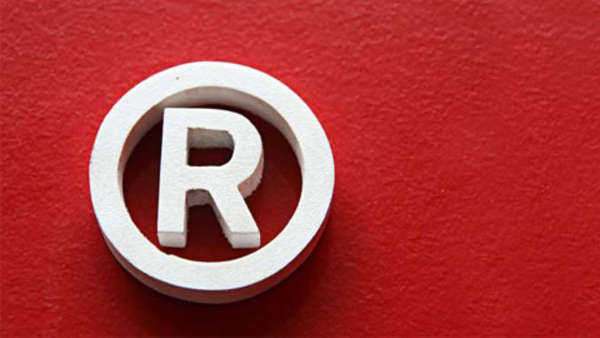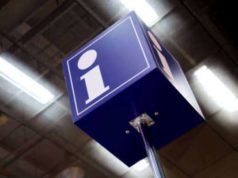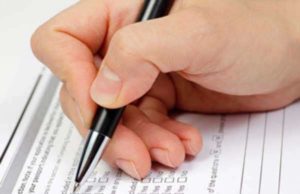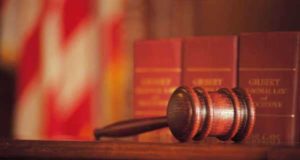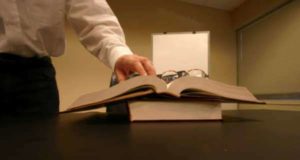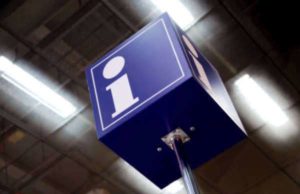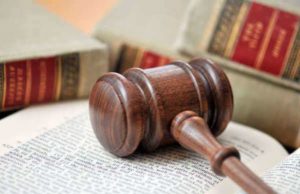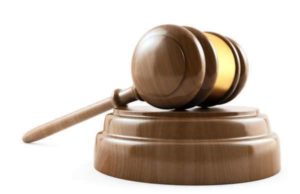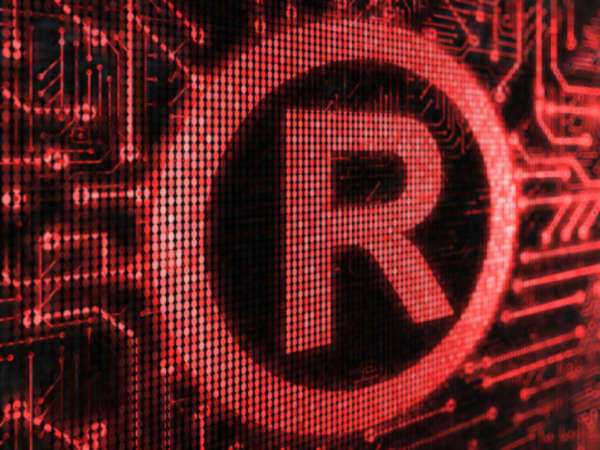
TITLE 15 – COMMERCE AND TRADE
CHAPTER 22 – TRADE-MARKS
SUBCHAPTER III – GENERAL PROVISIONS
Sec. 1114. Remedies; Infringement; Innocent Infringement By Printers And Publishers
(1) Any person who shall, without the consent of the registrant –
(a) use in commerce any reproduction, counterfeit, copy, or colorable imitation of a registered mark in connection with the sale, offering for sale, distribution, or advertising of any goods or services on or in connection with which such use is likely to cause confusion, or to cause mistake, or to deceive; or
(b) reproduce, counterfeit, copy, or colorably imitate a registered mark and apply such reproduction, counterfeit, copy, or colorable imitation to labels, signs, prints, packages, wrappers, receptacles or advertisements intended to be used in commerce upon or in connection with the sale, offering for sale, distribution, or advertising of goods or services on or in connection with which such use is likely to cause confusion, or to cause mistake, or to deceive, shall be liable in a civil action by the registrant for the remedies hereinafter provided. Under subsection (b) hereof, the registrant shall not be entitled to recover profits or damages unless the acts have been committed with knowledge that such imitation is intended to be used to cause confusion, or to cause mistake, or to deceive.
As used in this subsection, (FOOTNOTE 1) the term "any person" includes any State, any instrumentality of a State, and any officer or employee of a State or instrumentality of a State acting in his or her official capacity. Any State, and any such instrumentality, officer, or employee, shall be subject to the provisions of this chapter in the same manner and to the same extent as any nongovernmental entity.
(2) Notwithstanding any other provision of this chapter, the remedies given to the owner of a right infringed under this chapter or to a person bringing an action under section 1125(a) of this title shall be limited as follows:
(A) Where an infringer or violator is engaged solely in the business of printing the mark or violating matter for others and establishes that he or she was an innocent infringer or innocent violator, the owner of the right infringed or person bringing the action under section 1125(a) of this title shall be entitled as against such infringer or violator only to an injunction against future printing.
(B) Where the infringement or violation complained of is contained in or is part of paid advertising matter in a newspaper, magazine, or other similar periodical or in an electronic communication as defined in section 2510(12) of title 18, the remedies of the owner of the right infringed or person bringing the action under section 1125(a) of this title as against the publisher or distributor of such newspaper, magazine, or other similar periodical or electronic communication shall be limited to an injunction against the presentation of such advertising matter in future issues of such newspapers, magazines, or other similar periodicals or in future transmissions of such electronic communications. The limitations of this subparagraph shall apply only to innocent infringers and innocent violators.
(C) Injunctive relief shall not be available to the owner of the right infringed or person bringing the action under section 1125(a) of this title with respect to an issue of a newspaper, magazine, or other similar periodical or an electronic communication containing infringing matter or violating matter where restraining the dissemination of such infringing matter or violating matter in any particular issue of such periodical or in an electronic communication would delay the delivery of such issue or transmission of such electronic communication after the regular time for such delivery or transmission, and such delay would be due to the method by which publication and distribution of such periodical or transmission of such electronic communication is customarily conducted in accordance with sound business practice, and not due to any method or device adopted to evade this section or to prevent or delay the issuance of an injunction or restraining order with respect to such infringing matter or violating matter.
(D) As used in this paragraph –
(i) the term "violator" means a person who violates section 1125(a) of this title; and
(ii) the term "violating matter" means matter that is the subject of a violation under section 1125(a) of this title.
AMENDMENTS
1992 – Par. (1). Pub. L. 102-542 inserted at end "As used in this subsection, the term 'any person' includes any State, any instrumentality of a State, and any officer or employee of a State or instrumentality of a State acting in his or her official capacity. Any State, and any such instrumentality, officer, or employee, shall be subject to the provisions of this chapter in the same manner and to the same extent as any nongovernmental entity."
1988 – Par. (2). Pub. L. 100-667 amended par. (2) generally. Prior to amendment, par. (2) read as follows: "Notwithstanding any other provision of this chapter, the remedies given to the owner of the right infringed shall be limited as follows: (a) Where an infringer in engaged solely in the business of printing the mark for others and establishes that he was an innocent infringer the owner of the right infringed shall be entitled as against such infringer only to an injunction against future printing; (b) where the infringement complained of is contained in or is part of paid advertising matter in a newspaper, magazine, or other similar periodical the remedies of the owner of the right infringed as against the publisher or distributor of such newspaper, magazine, or other similar periodical shall be confined to an injunction against the presentation of such advertising matter in future issues of such newspapers, magazines, or other similar periodical:
Provided, That these limitations shall apply only to innocent infringers; (c) injunction relief shall not be available to the owner of the right infringed in respect of an issue of a newspaper, magazine, or other similar periodical containing infringing matter when restraining the dissemination of such infringing matter in any particular issue of such periodical would delay the delivery of such issue after the regular time therefor, and such delay would be due to the method by which publication and distribution of such periodical is customarily conducted in accordance with sound business practice, and not to any method or device adopted for the evasion of this section or to prevent or delay the issuance of an injunction or restraining order with respect to such infringing matter."
1962 – Par. (1). Pub. L. 87-772 amended provisions generally, and among other changes, inserted "distribution", and struck out "purchasers as to the source of origin of such goods or services" after "or to deceive" in subsec. (a), inserted provisions regarding the likelihood of such use causing confusion, mistake, or deception, in subsec. (b), and struck out the limitation on recovery under subsec. (b) to acts committed with knowledge that such acts would deceive purchasers. Par. (2)(b). Pub. L. 87-772 substituted "publisher" for "published".
Sec. 1115. Registration On Principal Register As Evidence Of Exclusive Right To Use Mark; Defenses
(a) Evidentiary value; defenses
Any registration issued under the Act of March 3, 1881, or the Act of February 20, 1905, or of a mark registered on the principal register provided by this chapter and owned by a party to an action shall be admissible in evidence and shall be prima facie evidence of the validity of the registered mark and of the registration of the mark, of the registrant's ownership of the mark, and of the registrant's exclusive right to use the registered mark in commerce on or in connection with the goods or services specified in the registration subject to any conditions or limitations stated therein, but shall not preclude another person from proving any legal or equitable defense or defect, including those set forth in subsection (b) of this section, which might have been asserted if such mark had not been registered.
(b) Incontestability; defenses
To the extent that the right to use the registered mark has become incontestable under section 1065 of this title, the registration shall be conclusive evidence of the validity of the registered mark and of the registration of the mark, of the registrant's ownership of the mark, and of the registrant's exclusive right to use the registered mark in commerce. Such conclusive evidence shall relate to the exclusive right to use the mark on or in connection with the goods or services specified in the affidavit filed under the provisions of section 1065 of this title, or in the renewal application filed under the provisions of section 1059 of this title if the goods or services specified in the renewal are fewer in number, subject to any conditions or limitations in the registration or in such affidavit or renewal application. Such conclusive evidence of the right to use the registered mark shall be subject to proof of infringement as defined in section 1114 of this title, and shall be subject to the following defenses or defects:
(1) That the registration or the incontestable right to use the mark was obtained fraudulently; or
(2) That the mark has been abandoned by the registrant; or
(3) That the registered mark is being used by or with the permission of the registrant or a person in privity with the registrant, so as to misrepresent the source of the goods or services on or in connection with which the mark is used; or
(4) That the use of the name, term, or device charged to be an infringement is a use, otherwise than as a mark, of the party's individual name in his own business, or of the individual name of anyone in privity with such party, or of a term or device which is descriptive of and used fairly and in good faith only to describe the goods or services of such party, or their geographic origin; or
(5) That the mark whose use by a party is charged as an infringement was adopted without knowledge of the registrant's prior use and has been continuously used by such party or those in privity with him from a date prior to (A) the date of constructive use of the mark established pursuant to section 1057(c) of this title, (B) the registration of the mark under this chapter if the application for registration is filed before the effective date of the Trademark Law Revision Act of 1988, or (C) publication of the registered mark under subsection (c) of section 1062 of this title: Provided, however, That this defense or defect shall apply only for the area in which such continuous prior use is proved; or
(6) That the mark whose use is charged as an infringement was registered and used prior to the registration under this chapter or publication under subsection (c) of section 1062 of this title of the registered mark of the registrant, and not abandoned:
Provided, however, That this defense or defect shall apply only for the area in which the mark was used prior to such registration or such publication of the registrant's mark; or
(7) That the mark has been or is being used to violate the antitrust laws of the United States; or
(8) That equitable principles, including laches, estoppel, and acquiescence, are applicable.
The antitrust laws, referred to in subsec. (b)(7), are classified generally to chapter 1 (Sec. 1 et seq.) of this title.
AMENDMENTS
1988 – Subsec. (a). Pub. L. 100-667, Sec. 128(a), inserted "the validity of the registered mark and of the registration of the mark, of the registrant's ownership of the mark, and of the" after "facie evidence of", inserted "or in connection with" after "in commerce on", substituted "another person" for "an opposing party", and inserted ", including those set forth in subsection (b) of this section," after "or defect". Subsec. (b). Pub. L. 100-667, Sec. 128(b)(1), amended introductory provisions generally. Prior to amendment, introductory provisions read as follows: "If the right to use the registered mark has become incontestable under section 1065 of this title, the registration shall be conclusive evidence of the registrant's exclusive right to use the registered mark in commerce on or in connection with the goods or services specified in the affidavit filed under the provisions of said section 1065 subject to any conditions or limitations stated therein except when one of the following defenses or defects is established:". Subsec. (b)(3). Pub. L. 100-667, Sec. 128(b)(2), inserted "on or" after "goods or services". Subsec. (b)(4). Pub. L. 100-667, Sec. 128(b)(3), struck out "trade or service" after "than as a" and "to users" after "only to describe". Subsec. (b)(5). Pub. L. 100-667, Sec. 128(b)(4), substituted "(A) the date of constructive use of the mark established pursuant to section 1057(c) of this title, (B) the registration of the mark under this chapter if the application for registration is filed before the effective date of the Trademark Law Revision Act of 1988, or (C)" for "registration of the mark under this chapter or". Subsec. (b)(8). Pub. L. 100-667, Sec. 128(b)(5), (6), added par. (8).
1962 – Subsec. (a). Pub. L. 87-772 substituted "registration subject to" for "certificate subject to", and struck out "certificate of" before "registration issued". Subsec. (b). Pub. L. 87-772 substituted "registration shall" for "certificate shall", and "affidavit filed under the provisions of said section 1065" for "certificate" in text preceding par. (1), substituted "registrant or a person in privity with the registrant," for "assignee", and struck out "has been assigned and" after "registered mark" in par. (3), substituted "registration of the mark under this chapter or" for "the", and struck out "(a) or" before "(c) of section 1062" in par. (5), inserted "registration under this chapter", substituted "such registration or such" for "the date of", and struck out "(a) or" before "(c) of section 1062", "only where the said mark has been published pursuant to subsections (c) of section 1062 of this title and shall apply" after "defect shall apply", and "under subsection (a) or (c) of section 1062 of this title" after "registrant's mark", in par. (6).
Sec. 1116. Injunctive Relief
(a) Jurisdiction; service
The several courts vested with jurisdiction of civil actions arising under this chapter shall have power to grant injunctions, according to the principles of equity and upon such terms as the court may deem reasonable, to prevent the violation of any right of the registrant of a mark registered in the Patent and Trademark Office or to prevent a violation under section 1125(a) of this title. Any such injunction may include a provision directing the defendant to file with the court and serve on the plaintiff within thirty days after the service on the defendant of such injunction, or such extended period as the court may direct, a report in writing under oath setting forth in detail the manner and form in which the defendant has complied with the injunction. Any such injunction granted upon hearing, after notice to the defendant, by any district court of the United States, may be served on the parties against whom such injunction is granted anywhere in the United States where they may be found, and shall be operative and may be enforced by proceedings to punish for contempt, or otherwise, by the court by which such injunction was granted, or by any other United States district court in whose jurisdiction the defendant may be found.
(b) Transfer of certified copies of court papers The said courts shall have jurisdiction to enforce said injunction, as provided in this chapter, as fully as if the injunction had been granted by the district court in which it is sought to be enforced. The clerk of the court or judge granting the injunction shall, when required to do so by the court before which application to enforce said injunction is made, transfer without delay to said court a certified copy of all papers on file in his office upon which said injunction was granted.
(c) Notice to Commissioner
It shall be the duty of the clerks of such courts within one month after the filing of any action, suit, or proceeding involving a mark registered under the provisions of this chapter to give notice thereof in writing to the Commissioner setting forth in order so far as known the names and addresses of the litigants and the designating number or numbers of the registration or registrations upon which the action, suit, or proceeding has been brought, and in the event any other registration be subsequently included in the action, suit, or proceeding by amendment, answer, or other pleading, the clerk shall give like notice thereof to the Commissioner, and within one month after the judgment is entered or an appeal is taken the clerk of the court shall give notice thereof to the Commissioner, and it shall be the duty of the Commissioner on receipt of such notice forthwith to endorse the same upon the file wrapper of the said registration or registrations and to incorporate the same as a part of the contents of said file wrapper.
(d) Civil actions arising out of use of counterfeit marks (1)(A) In the case of a civil action arising under section 1114(1)(a) of this title or section 380 of title 36 with respect to a violation that consists of using a counterfeit mark in connection with the sale, offering for sale, or distribution of goods or services, the court may, upon ex parte application, grant an order under subsection (a) of this section pursuant to this subsection providing for the seizure of goods and counterfeit marks involved in such violation and the means of making such marks, and records documenting the manufacture, sale, or receipt of things involved in such violation.
(B) As used in this subsection the term "counterfeit mark" means –
(i) a counterfeit of a mark that is registered on the principal register in the United States Patent and Trademark Office for such goods or services sold, offered for sale, or distributed and that is in use, whether or not the person against whom relief is sought knew such mark was so registered; or
(ii) a spurious designation that is identical with, or substantially indistinguishable from, a designation as to which the remedies of this chapter are made available by reason of section 380 of title 36; but such term does not include any mark or designation used on or in connection with goods or services of which the manufacture or producer was, at the time of the manufacture or production in question authorized to use the mark or designation for the type of goods or services so manufactured or produced, by the holder of the right to use such mark or designation.
(2) The court shall not receive an application under this subsection unless the applicant has given such notice of the application as is reasonable under the circumstances to the United States attorney for the judicial district in which such order is sought. Such attorney may participate in the proceedings arising under such application if such proceedings may affect evidence of an offense against the United States. The court may deny such application if the court determines that the public interest in a potential prosecution so requires.
(3) The application for an order under this subsection shall –
(A) be based on an affidavit or the verified complaint establishing facts sufficient to support the findings of fact and conclusions of law required for such order; and
(B) contain the additional information required by paragraph
(5) of this subsection to be set forth in such order.
(4) The court shall not grant such an application unless –
(A) the person obtaining an order under this subsection provides the security determined adequate by the court for the payment of such damages as any person may be entitled to recover as a result of a wrongful seizure or wrongful attempted seizure under this subsection; and
(B) the court finds that it clearly appears from specific facts that –
(i) an order other than an ex parte seizure order is not adequate to achieve the purposes of section 1114 of this title;
(ii) the applicant has not publicized the requested seizure;
(iii) the applicant is likely to succeed in showing that the person against whom seizure would be ordered used a counterfeit mark in connection with the sale, offering for sale, or distribution of goods or services;
(iv) an immediate and irreparable injury will occur if such seizure is not ordered;
(v) the matter to be seized will be located at the place identified in the application;
(vi) the harm to the applicant of denying the application outweighs the harm to the legitimate interests of the person against whom seizure would be ordered of granting the application; and
(vii) the person against whom seizure would be ordered, or persons acting in concert with such person, would destroy, move, hide, or otherwise make such matter inaccessible to the court, if the applicant were to proceed on notice to such person.
(5) An order under this subsection shall set forth –
(A) the findings of fact and conclusions of law required for the order;
(B) a particular description of the matter to be seized, and a description of each place at which such matter is to be seized;
(C) the time period, which shall end not later than seven days after the date on which such order is issued, during which the seizure is to be made;
(D) the amount of security required to be provided under this subsection; and
(E) a date for the hearing required under paragraph (10) of this subsection.
(6) The court shall take appropriate action to protect the person against whom an order under this subsection is directed from publicity, by or at the behest of the plaintiff, about such order and any seizure under such order.
(7) Any materials seized under this subsection shall be taken into the custody of the court. The court shall enter an appropriate protective order with respect to discovery by the applicant of any records that have been seized. The protective order shall provide for appropriate procedures to assure that confidential information contained in such records is not improperly disclosed to the applicant.
(8) An order under this subsection, together with the supporting documents, shall be sealed until the person against whom the order is directed has an opportunity to contest such order, except that any person against whom such order is issued shall have access to such order and supporting documents after the seizure has been carried out.
(9) The court shall order that a United States marshal or other law enforcement officer is to serve a copy of the order under this subsection and then is to carry out the seizure under such order. The court shall issue orders, when appropriate, to protect the defendant from undue damage from the disclosure of trade secrets or other confidential information during the course of the seizure, including, when appropriate, orders restricting the access of the applicant (or any agent or employee of the applicant) to such secrets or information.
(10)(A) The court shall hold a hearing, unless waived by all the parties, on the date set by the court in the order of seizure. That date shall be not sooner than ten days after the order is issued and not later than fifteen days after the order is issued, unless the applicant for the order shows good cause for another date or unless the party against whom such order is directed consents to another date for such hearing. At such hearing the party obtaining the order shall have the burden to prove that the facts supporting findings of fact and conclusions of law necessary to support such order are still in effect. If that party fails to meet that burden, the seizure order shall be dissolved or modified appropriately.
(B) In connection with a hearing under this paragraph, the court may make such orders modifying the time limits for discovery under the Rules of Civil Procedure as may be necessary to prevent the frustration of the purposes of such hearing.
(11) A person who suffers damage by reason of a wrongful seizure under this subsection has a cause of action against the applicant for the order under which such seizure was made, and shall be entitled to recover such relief as may be appropriate, including damages for lost profits, cost of materials, loss of good will, and punitive damages in instances where the seizure was sought in bad faith, and, unless the court finds extenuating circumstances, to recover a reasonable attorney's fee. The court in its discretion may award prejudgment interest on relief recovered under this paragraph, at an annual interest rate established under section 6621 of title 26, commencing on the date of service of the claimant's pleading setting forth the claim under this paragraph and ending on the date such recovery is granted, or for such shorter time as the court deems appropriate.
Sec. 1117. Recovery For Violation Of Rights; Profits, Damages And Costs; Attorney Fees; Treble Damages
(a) When a violation of any right of the registrant of a mark registered in the Patent and Trademark Office, or a violation under section 1125(a) of this title, shall have been established in any civil action arising under this chapter, the plaintiff shall be entitled, subject to the provisions of sections 1111 and 1114 of this title, and subject to the principles of equity, to recover (1) defendant's profits, (2) any damages sustained by the plaintiff, and (3) the costs of the action. The court shall assess such profits and damages or cause the same to be assessed under its direction. In assessing profits the plaintiff shall be required to prove defendant's sales only; defendant must prove all elements of cost or deduction claimed. In assessing damages the court may enter judgment, according to the circumstances of the case, for any sum above the amount found as actual damages, not exceeding three times such amount. If the court shall find that the amount of the recovery based on profits is either inadequate or excessive the court may in its discretion enter judgment for such sum as the court shall find to be just, according to the circumstances of the case. Such sum in either of the above circumstances shall constitute compensation and not a penalty. The court in exceptional cases may award reasonable attorney fees to the prevailing party.
(b) In assessing damages under subsection (a) of this section, the court shall, unless the court finds extenuating circumstances, enter judgment for three times such profits or damages, whichever is greater, together with a reasonable attorney's fee, in the case of any violation of section 1114(1)(a) of this title or section 380 of title 36 that consists of intentionally using a mark or designation, knowing such mark or designation is a counterfeit mark (as defined in section 1116(d) of this title), in connection with the sale, offering for sale, or distribution of goods or services. In such cases, the court may in its discretion award prejudgment interest on such amount at an annual interest rate established under section 6621 of title 26, commencing on the date of the service of the claimant's pleadings setting forth the claim for such entry and ending on the date such entry is made, or for such shorter time as the court deems appropriate.
Sec. 1121. Jurisdiction Of Federal Courts; State And Local Requirements That Registered Trademarks Be Altered Or Displayed Differently; Prohibition
(a) The district and territorial courts of the United States shall have original jurisdiction and the courts of appeal of the United States (other than the United States Court of Appeals for the Federal Circuit) shall have appellate jurisdiction, of all actions arising under this chapter, without regard to the amount in controversy or to diversity or lack of diversity of the citizenship of the parties.
(b) No State or other jurisdiction of the United States or any political subdivision or any agency thereof may require alteration of a registered mark, or require that additional trademarks, service marks, trade names, or corporate names that may be associated with or incorporated into the registered mark be displayed in the mark in a manner differing from the display of such additional trademarks, service marks, trade names, or corporate names contemplated by the registered mark as exhibited in the certificate of registration issued by the United States Patent and Trademark Office.
Sec. 1127. Construction And Definitions; Intent Of Chapter
In the construction of this chapter, unless the contrary is plainly apparent from the context –
The United States includes and embraces all territory which is under its jurisdiction and control.
The word "commerce" means all commerce which may lawfully be regulated by Congress.
The term "principal register" refers to the register provided for by sections 1051 to 1072 of this title, and the term "supplemental register" refers to the register provided for by sections 1091 to 1096 of this title.
The term "person" and any other word or term used to designate the applicant or other entitled to a benefit or privilege or rendered liable under the provisions of this chapter includes a juristic person as well as a natural person. The term "juristic person" includes a firm, corporation, union, association, or other organization capable of suing and being sued in a court of law.
The term "person" also includes any State, any instrumentality of a State, and any officer or employee of a State or instrumentality of a State acting in his or her official capacity. Any State, and any such instrumentality, officer, or employee, shall be subject to the provisions of this chapter in the same manner and to the same extent as any nongovernmental entity.
The terms "applicant" and "registrant" embrace the legal representatives, predecessors, successors and assigns of such applicant or registrant.
The term "Commissioner" means the Commissioner of Patents and Trademarks.
The term "related company" means any person whose use of a mark is controlled by the owner of the mark with respect to the nature and quality of the goods or services on or in connection with which the mark is used.
The terms "trade name" and "commercial name" mean any name used by a person to identify his or her business or vocation.
The term "trademark" includes any word, name, symbol, or device, or any combination thereof –
(1) used by a person, or
(2) which a person has a bona fide intention to use in commerce and applies to register on the principal register established by this chapter, to identify and distinguish his or her goods, including a unique product, from those manufactured or sold by others and to indicate the source of the goods, even if that source is unknown.
The term "service mark" means any word, name, symbol, or device, or any combination thereof –
(1) used by a person, or
(2) which a person has a bona fide intention to use in commerce and applies to register on the principal register established by this chapter, to identify and distinguish the services of one person, including a unique service, from the services of others and to indicate the source of the services, even if that source is unknown. Titles, character names, and other distinctive features of radio or television programs may be registered as service marks notwithstanding that they, or the programs, may advertise the goods of the sponsor.
The term "certification mark" means any word, name, symbol, or device, or any combination thereof –
(1) used by a person other than its owner, or
(2) which its owner has a bona fide intention to permit a person other than the owner to use in commerce and files an application to register on the principal register established by this chapter, to certify regional or other origin, material, mode of manufacture, quality, accuracy, or other characteristics of such person's goods or services or that the work or labor on the goods or services was performed by members of a union or other organization.
The term "collective mark" means a trademark or service mark –
(1) used by the members of a cooperative, an association, or other collective group or organization, or
(2) which such cooperative, association, or other collective group or organization has a bona fide intention to use in commerce and applies to register on the principal register established by this chapter, and includes marks indicating membership in a union, an association, or other organization.
The term "mark" includes any trademark, service mark, collective mark, or certification mark.
The term "use in commerce" means the bona fide use of a mark in the ordinary course of trade, and not made merely to reserve a right in a mark. For purposes of this chapter, a mark shall be deemed to be in use in commerce –
(1) on goods when –
(A) it is placed in any manner on the goods or their containers or the displays associated therewith or on the tags or labels affixed thereto, or if the nature of the goods makes such placement impracticable, then on documents associated with the goods or their sale, and
(B) the goods are sold or transported in commerce, and
(2) on services when it is used or displayed in the sale or advertising of services and the services are rendered in commerce, or the services are rendered in more than one State or in the United States and a foreign country and the person rendering the services is engaged in commerce in connection with the services.
A mark shall be deemed to be "abandoned" when either of the following occurs:
(1) When its use has been discontinued with intent not to resume such use. Intent not to resume may be inferred from circumstances. Nonuse for two consecutive years shall be prima facie evidence of abandonment. "Use" of a mark means the bona fide use of that mark made in the ordinary course of trade, and not made merely to reserve a right in a mark.
(2) When any course of conduct of the owner, including acts of omission as well as commission, causes the mark to become the generic name for the goods or services on or in connection with which it is used or otherwise to lose its significance as a mark. Purchaser motivation shall not be a test for determining abandonment under this paragraph.
The term "colorable imitation" includes any mark which so resembles a registered mark as to be likely to cause confusion or mistake or to deceive.
The term "registered mark" means a mark registered in the United States Patent and Trademark Office under this chapter or under the Act of March 3, 1881, or the Act of February 20, 1905, or the Act of March 19, 1920. The phrase "marks registered in the Patent and Trademark Office" means registered marks.
The term "Act of March 3, 1881", "Act of February 20, 1905", or "Act of March 19, 1920", means the respective Act as amended.
A "counterfeit" is a spurious mark which is identical with, or substantially indistinguishable from, a registered mark.
Words used in the singular include the plural and vice versa.
The intent of this chapter is to regulate commerce within the control of Congress by making actionable the deceptive and misleading use of marks in such commerce; to protect registered marks used in such commerce from interference by State, or territorial legislation; to protect persons engaged in such commerce against unfair competition; to prevent fraud and deception in such commerce by the use of reproductions, copies, counterfeits, or colorable imitations of registered marks; and to provide rights and remedies stipulated by treaties and conventions respecting trade-marks, trade names, and unfair competition entered into between the United States and foreign nations.
AMENDMENT OF SECTION
Pub. L. 103-465, title V, Sec. 521, 523, Dec. 8, 1994, 108 Stat. 4981, 4982, provided that, effective one year after the date on which the WTO Agreement enters into force with respect to the United States (Jan. 1, 1995), this section is amended by amending the par. defining "abandoned" to read as follows:
A mark shall be deemed to be "abandoned" if either of the following occurs:
(1) When its use has been discontinued with intent not to resume such use. Intent not to resume may be inferred from circumstances. Nonuse for 3 consecutive years shall be prima facie evidence of abandonment. "Use" of a mark means the bona fide use of such mark made in the ordinary course of trade, and not made merely to reserve a right in a mark.
(2) When any course of conduct of the owner, including acts of omission as well as commission, causes the mark to become the generic name for the goods or services on or in connection with which it is used or otherwise to lose its significance as a mark. Purchaser motivation shall not be a test for determining abandonment under this paragraph.
AMENDMENTS
1992 – Pub. L. 102-542 inserted after fourth undesignated paragraph "The term 'person' also includes any State, any instrumentality of a State, and any officer or employee of a State or instrumentality of a State acting in his or her official capacity. Any State, and any such instrumentality, officer, or employee, shall be subject to the provisions of this chapter in the same manner and to the same extent as any nongovernmental entity."
1988 – Pub. L. 100-667, Sec. 134(1), amended par. defining "related company" generally. Prior to amendment, par. read as follows: "The term 'related company' means any person who legitimately controls or is controlled by the registrant or applicant for registration in respect to the nature and quality of the goods or services in connection with which the mark is used."
Pub. L. 100-667, Sec. 134(2), amended par. defining "trade name" and "commercial name" generally. Prior to amendment, par. read as follows: "The terms 'trade name' and 'commercial name' include individual names and surnames, firm names and trade names used by manufacturers, industrialists, merchants, agriculturists, and others to identify their businesses, vocations, or occupations; the names or titles lawfully adopted and used by persons, firms, associations, corporations, companies, unions, and any manufacturing, industrial, commercial, agricultural, or other organizations engaged in trade or commerce and capable of suing and being sued in a court of law."
Pub. L. 100-667, Sec. 134(3), amended par. defining "trademark" generally. Prior to amendment, par. read as follows: "The term 'trademark' includes any word, name, symbol, or device or any combination thereof adopted and used by a manufacturer or merchant to identify and distinguish his goods, including a unique product, from those manufactured or sold by others and to indicate the source of the goods, even if that source is unknown."
Pub. L. 100-667, Sec. 134(4), amended par. defining "service mark" generally. Prior to amendment, par. read as follows: "The term 'service mark' means a mark used in the sale or advertising of services to identify and distinguish the services of one person, including a unique service, from the services of others and to indicate the source of the services, even if that source is unknown. Titles, character names and other distinctive features of radio or television programs may be registered as service marks notwithstanding that they, or the programs, may advertise the goods of the sponsor."
Pub. L. 100-667, Sec. 134(5), amended par. defining "certification mark" generally. Prior to amendment, par. read as follows: "The term 'certification mark' means a mark used upon or in connection with the products or services of one or more persons other than the owner of the mark to certify regional or other origin, material, mode of manufacture, quality, accuracy or other characteristics of such goods or services or that the work or labor on the goods or services was performed by members of a union or other organization."
Pub. L. 100-667, Sec. 134(6), amended par. defining "collective mark" generally. Prior to amendment, par. read as follows: "The term 'collective mark' means a trade-mark or service mark used by the members of a cooperative, an association or other collective group or organization and includes marks used to indicate membership in a union, an association or other organization."
Pub. L. 100-667, Sec. 134(7), amended par. defining "mark" generally. Prior to amendment, par. read as follows: "The term 'mark' includes any trade-mark, service mark, collective mark, or certification mark entitled to registration under this chapter whether registered or not."
Pub. L. 100-667, Sec. 134(8), substituted par. defining "use in commerce" for former par. which read as follows: "For the purposes of this chapter a mark shall be deemed to be used in commerce (a) on goods when it is placed in any manner on the goods or their containers or the displays associated therewith or on the tags or labels affixed thereto and the goods are sold or transported in commerce and (b) on services when it is used or displayed in the sale or advertising of services and the services are rendered in commerce, or the services are rendered in more than one State or in this and a foreign country and the person rendering the services is engaged in commerce in connection therewith." and par. providing when a mark is deemed abandoned for former par. which read as follows: "A mark shall be deemed to be 'abandoned' – "(a) When its use has been discontinued with intent not to resume. Intent not to resume may be inferred from circumstances. Nonuse for two consecutive years shall be prima facie abandonment. "(b) When any course of conduct of the registrant, including acts of omission as well as commission, causes the mark to lose its significance as an indication of origin. Purchaser motivation shall not be a test for determining abandonment under this subparagraph."
1984 – Pub. L. 98-620, Sec. 103(1), in definition of "trademark" substituted "trademark" for "trade-mark", and substituted "identify and distinguish his goods, including a unique product, from those manufactured or sold by others and to indicate the source of the goods, even if that source is unknown" for "identify his goods and distinguish them from those manufactured or sold by others".
Pub. L. 98-620, Sec. 103(2), in definition of "service mark" substituted "The term 'service mark' means a mark used in the sale or advertising of services to identify and distinguish the services of one person, including a unique service, from the services of others and to indicate the source of the services, even if that source is unknown" for "The term 'service mark' means a mark used in the sale or advertising of services to identify the services of one person and distinguish them from the services of others".
Pub. L. 98-620, Sec. 103(3), in subpar. (b) of par. relating to when a mark shall be deemed to be "abandoned", inserted "Purchaser motivation shall not be a test for determining abandonment under this subparagraph."
1975 – Pub. L. 93-596 substituted "Patent and Trademark Office" for "Patent Office" in two places and "Commissioner of Patents and Trademarks" for "Commissioner of Patents" in definition of "Commissioner".
1962 – Pub. L. 87-772 substituted, "predecessors," for "and" in definition of "applicant" and "registrant", "Titles, character names and other distinctive features of radio or television programs may be registered as service marks notwithstanding that they, or the programs, may advertise the goods of the sponsor" for "and includes without limitation the marks, names, symbols, titles, designations, slogans, character names, and distinctive features of radio or other advertising used in commerce", in definition of "service mark", inserted "or the services are rendered in more than one State or in this and a foreign country and the person rendering the services is engaged in commerce in connection therewith" in fifteenth paragraph relating to use in commerce, struck out "purchasers" after "deceive" in definition of "colorable imitation", and substituted "commerce" for "commence" in last paragraph relating to the intent of the chapter.
EFFECTIVE DATE OF 1994 AMENDMENT Amendment by Pub. L. 103-465 effective one year after the date on which the WTO Agreement enters into force with respect to the United States (Jan. 1, 1995).

